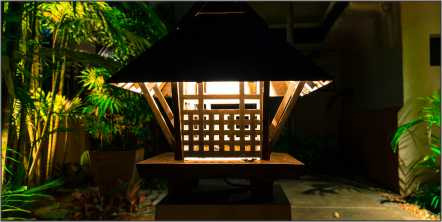
Bamboo House Design Ideas & Benefits
In its natural form, bamboo as a construction material is traditionally associated with the cultures of South Asia, East Asia, the South Pacific, Central and South America. In China and India, bamboo was used to hold up simple suspension bridges, either by making cables of split bamboo or twisting whole culms of sufficiently pliable bamboo together.
Bamboo provides good insulation against heat and creates a cool atmosphere. When designing a bamboo house, concrete posts can be built to make the structure sturdier and add strength to the foundation.
Bamboo cottage design may require architectural expertise for creating a more sturdy and aesthetically appealing structure. The structure will be capable of withstanding earthquakes owing to the high elasticity of the bamboo.
Bamboo can be included in the interiors to lend an elegant look to the house. When compared with traditional wood, bamboo has higher fire resistance. Thus, the material can also be included in kitchen designs. Moreover, due to high moisture resistance, bamboo also proves to be a suitable option for flooring and furniture design.
In order to protect bamboo from decay, two design principles are required:
1. The bamboo must be kept dry throughout its life to protect it against rot (fungi). This fundamental architectural principle is called "durability by design", and involves keeping the bamboo dry through good design practices such as elevating the structure above the ground, using damp proof membranes, having good drip details, having good roof overhangs, using waterproof coatings for the walls, etc.
2. The bamboo must be treated to protect it against insects (namely beetles and termites). The most common and appropriate chemical to treat bamboo is boron, normally either a mixture of borax and boric acid, but it also comes in one compound (di-sodium tetraborate decahydrate).
Both principles must be applied to a design in order to protect bamboo. Boron by itself is inadequate to protect against rot, and it will wash out if exposed to water.
Benefits:
Bamboo is an excellent material for building construction. Its ability to absorb pollutants is its noteworthy features. It absorbs a higher percentage of carbon dioxide compared to other plants, and produces 30% more oxygen compared to traditional wood. Since it helps prevent soil erosion, bamboo houses are suited for coastal areas.
Known for its flexibility, bamboo can be bent without any worry of splintering or breaking. Owing to its versatile nature, it becomes an ideal choice for designing walls, floors, roofs, piping, concrete reinforcement, and even scaffolding.
Bamboo contains strong fiber and possesses compressive strength, which is two times better than concrete. The tensile strength of bamboo is also comparable to that of steel. While most of the construction materials lead to the creation of tons of waste ending up in landfills, bamboo is a natural material that is completely recyclable. Manufacturing of bamboo-based products by many social businesses in India are becoming widely popular, and creates increased job opportunities.
Bamboo-based house construction helps lower pollution. It absorbs carbon dioxide and greenhouse gases while releasing about 35% more oxygen into the atmosphere.
https://housing.com/news/bamboo-house-design-and-construction-ideas-for-sustainable-living/ https://en.wikipedia.org/wiki/Bamboo_construction
